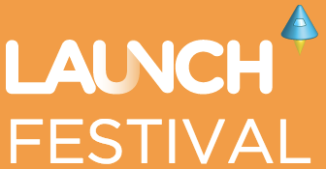“It only adds 4 inches to your iPhone and gives you 45 seconds of battery life, but makes coffee” explains Jason Calacanis as he gives an impromptu presentation of iCoffee, a new iPhone app he was asked to pitch by Yossi Vardi, one of the participants in the VC Panel at the Launch Festival yesterday.
The joke is part of what makes the Launch Festival a one of a kind event, where 50 companies pitch their products to a panel of judges and 5 thousand attendees.

First Day Startups
Although the conference started off with a bit of a snafu (45 mins registration line and about 1 hour delay in the program in general), things were quite good once you got inside. This is my third year attending the conference and it has grown both in size and quality.
The event is a great opportunity for startup founders to present their ideas to a panel of judges who will not think twice before coming down hard on you or your idea, and is also a great venue for networking.
Of the statups that presented on stage, the following caught my attention:
Whiplash: Not only this startup is already making money ($500K last year), they are experiencing growth and are providing a much needed service, i.e. the shipping and logistics for eCommerce. This is a huge opportunity that, if done correctly, can transform this company into a major player in the fulfillment business.

CubeSensor: Robert Scobble said that as he was hearing the live feed of the event on his way up to San Francisco, he stopped his car just to buy a couple of units from this startup. Their whole premise is to improve indoor living, and they do that by giving you a ‘cube’ that sits on a table and monitors the air quality, humidity, noise, etc. If you have ever worked in an office with terrible air quality (so called ‘sick buildings’) you wish you had one of those. The key for them will be figuring out a killer distribution strategy and strategic partnerships.

Jawfish: a real-time, multiplayer game on iOS. What’s the big deal? The team behind it seems pretty solid (guys from Full Tilt Poker) and their advantage seems to the the architecture behind the games, delivering an awesome gaming experience. If they are really this technologically advanced and can get the right deals in place, they can become a major force in online gaming.

Triptease: Trip Advisor should have been dead but is still lingering because there is simply not a better option for online travel reviews. Triptease wants to change it with a magazine-like interface that makes reviews easy to create and fun to read. But the most interesting aspect is the leveraging of social networks. As people create beautifully rendered reviews, they will be able to share it with their friends. According to founder Charlie Osmond, hotels have already expressed an interest in using the site and have been emailing customers to place their reviews on Triptease. Going after smart parterships like that is a good move. Now, they have to get critical mass to start moving the needle against Trip Advisor.

Hubskip: A better way to book travel, because it gives you money back. Not only Hubspkip has a slick interface, it centralizes all booking for your trip (hotel, transportation, etc.) so you don’t have to worry about it. We all know that booking travel sucks, no matter what Expedia, Travelocity, and the other players do to their sites, the whole experience is pretty miserable. If Hubskip can break the mold and give us better travel planning at cheaper prices, you’ve got a winner.

Next post I will talk about some of the other startups presenting and also about those in the demo pit.
 Looking for a primer on fundraising for startups? You are in luck, because Paul Graham, of Y Combinator fame, has an incredibly comprehensive and no BS essay that tells all you need to know about raising money.
Looking for a primer on fundraising for startups? You are in luck, because Paul Graham, of Y Combinator fame, has an incredibly comprehensive and no BS essay that tells all you need to know about raising money.










 Ignite San Francisco
Ignite San Francisco